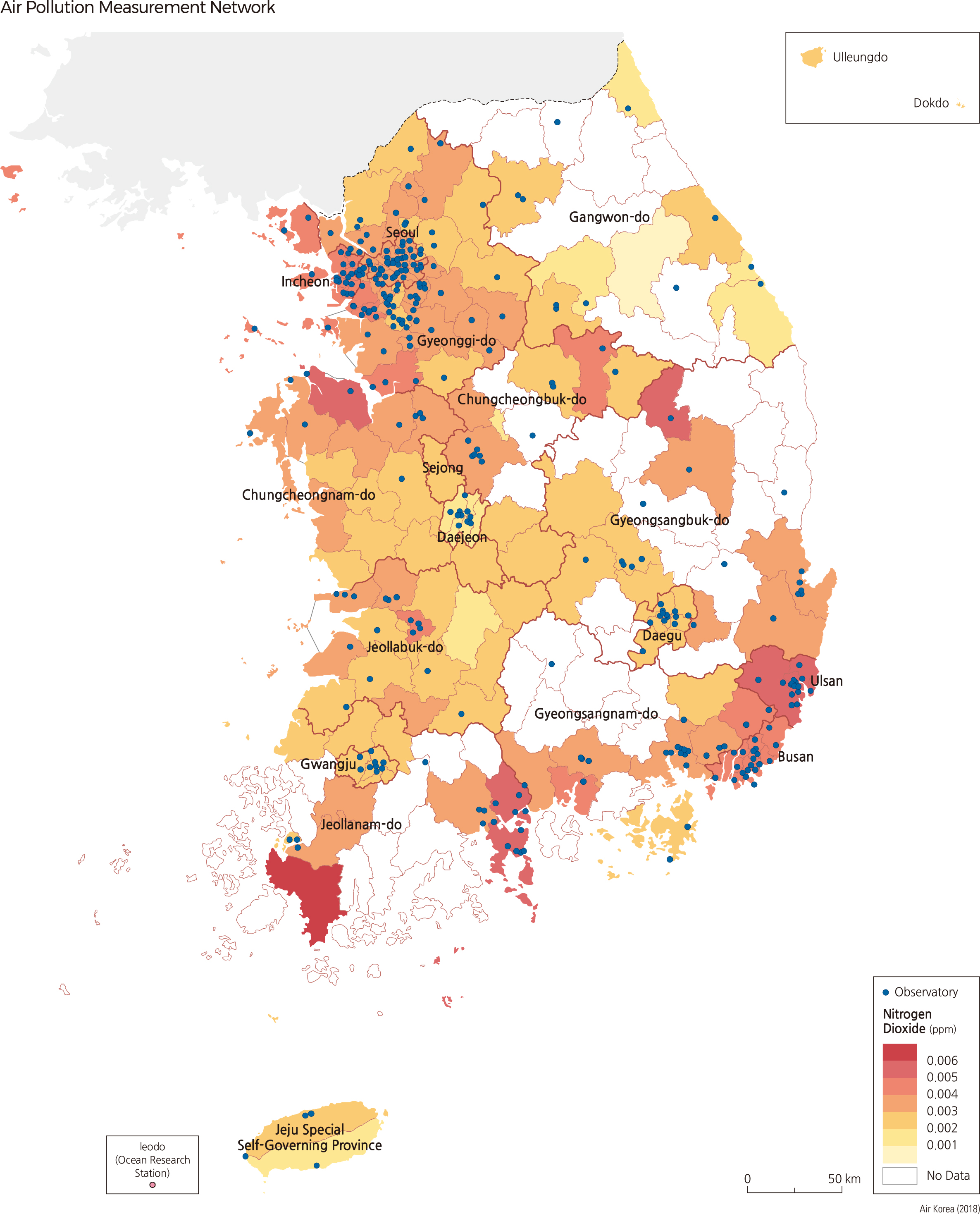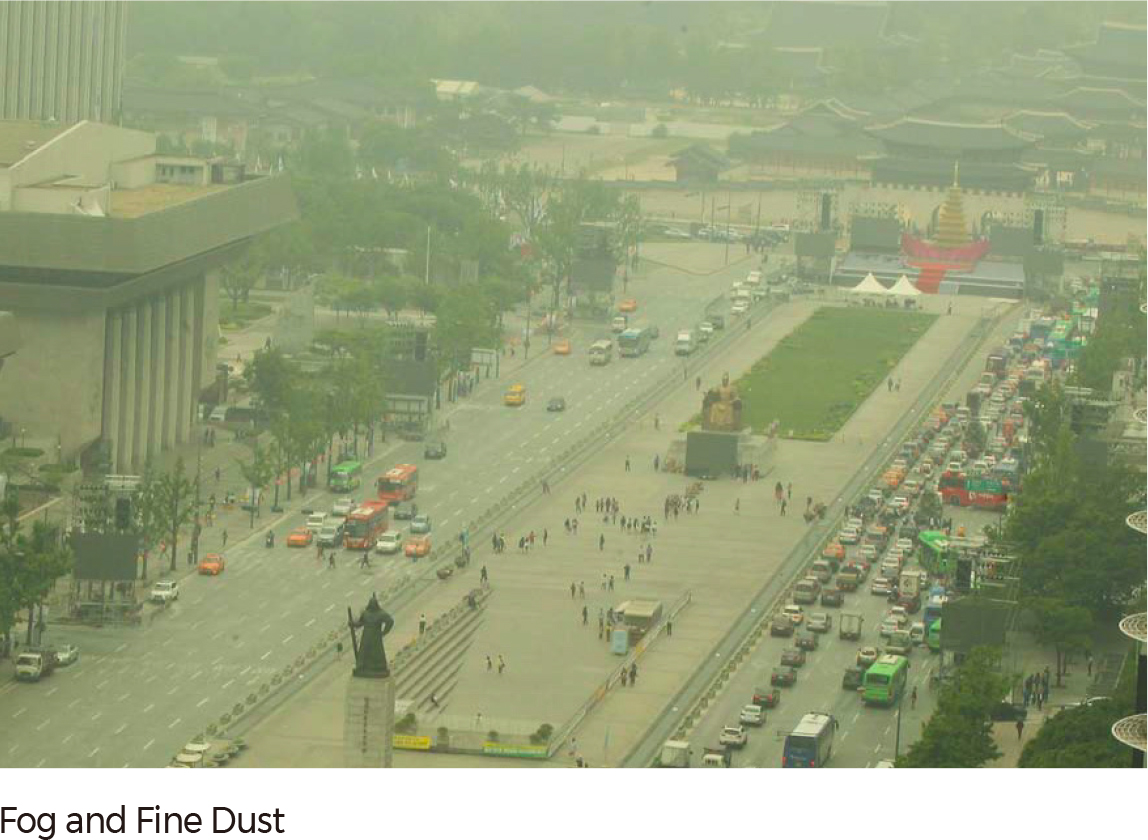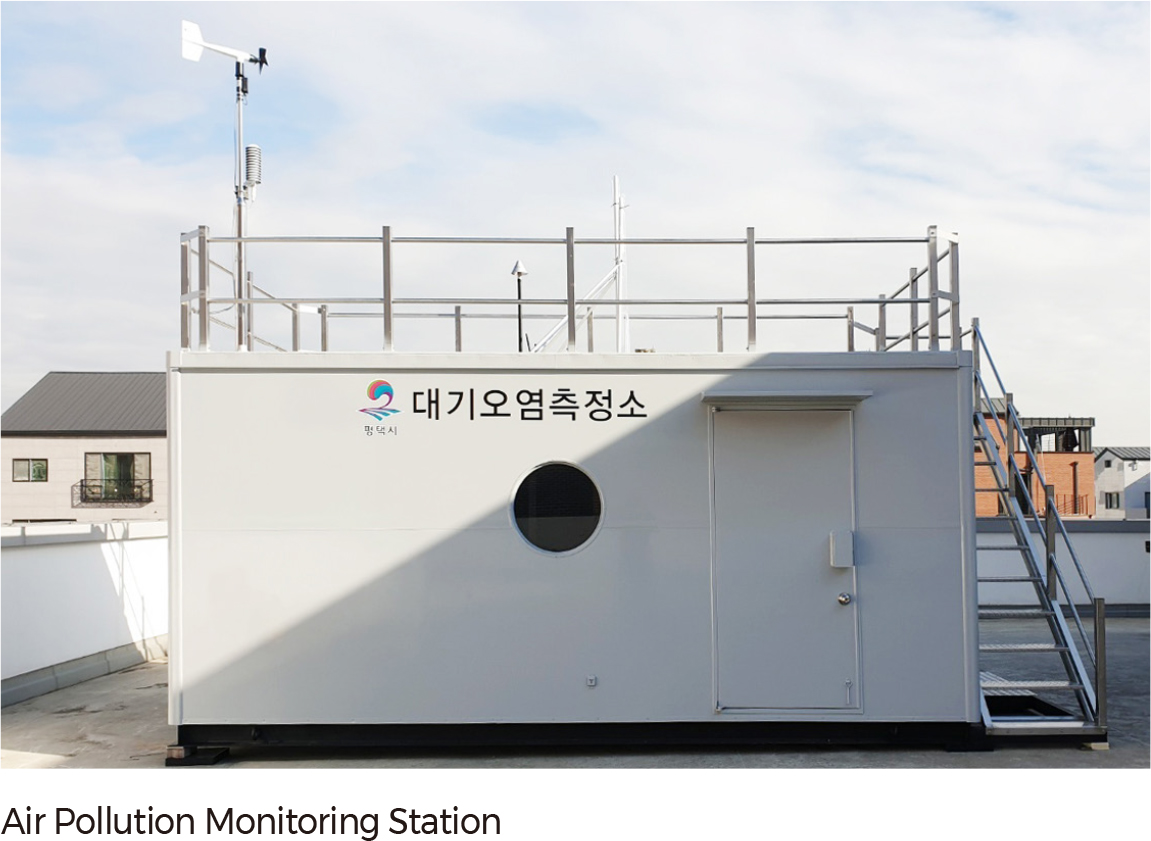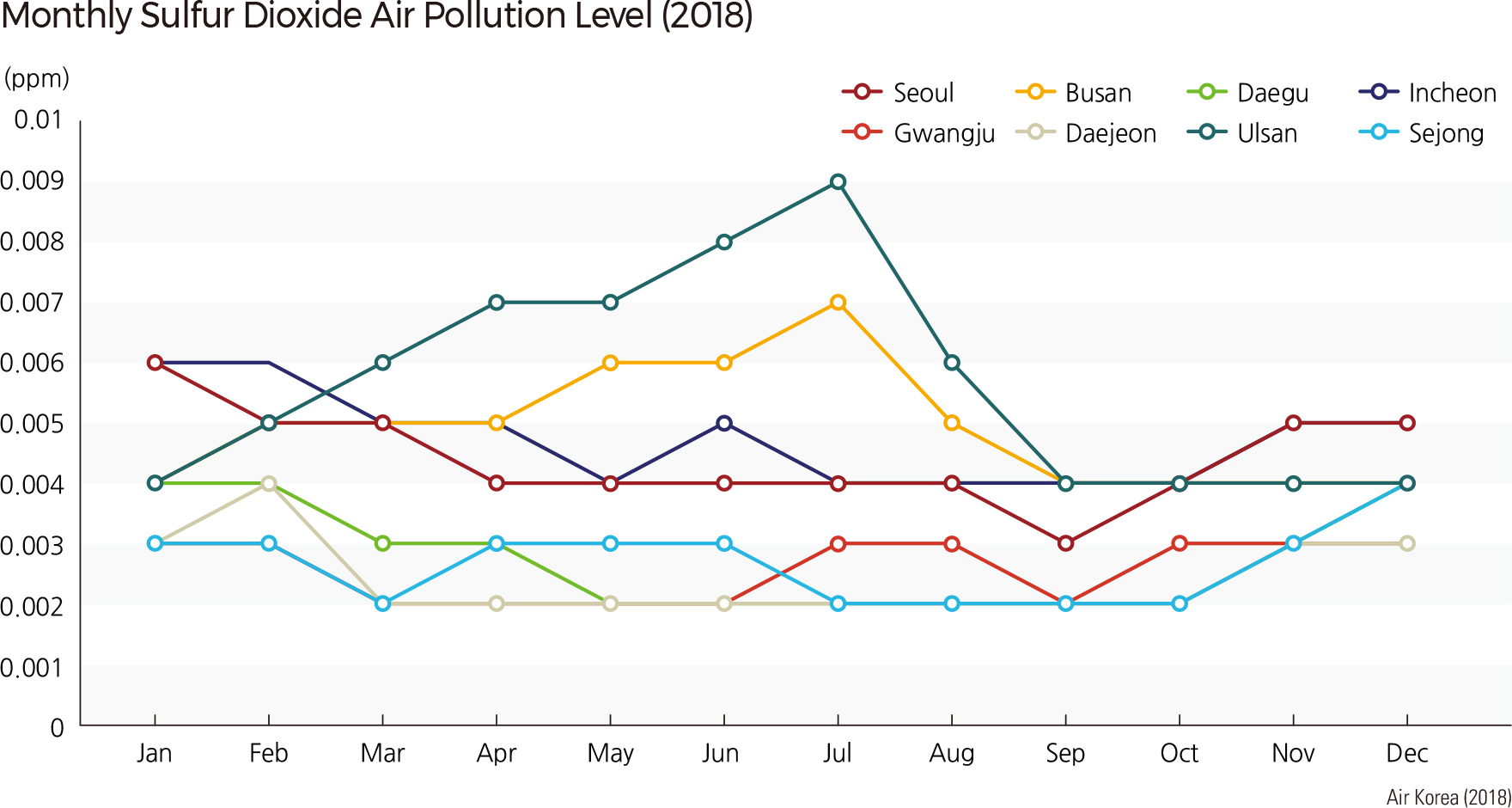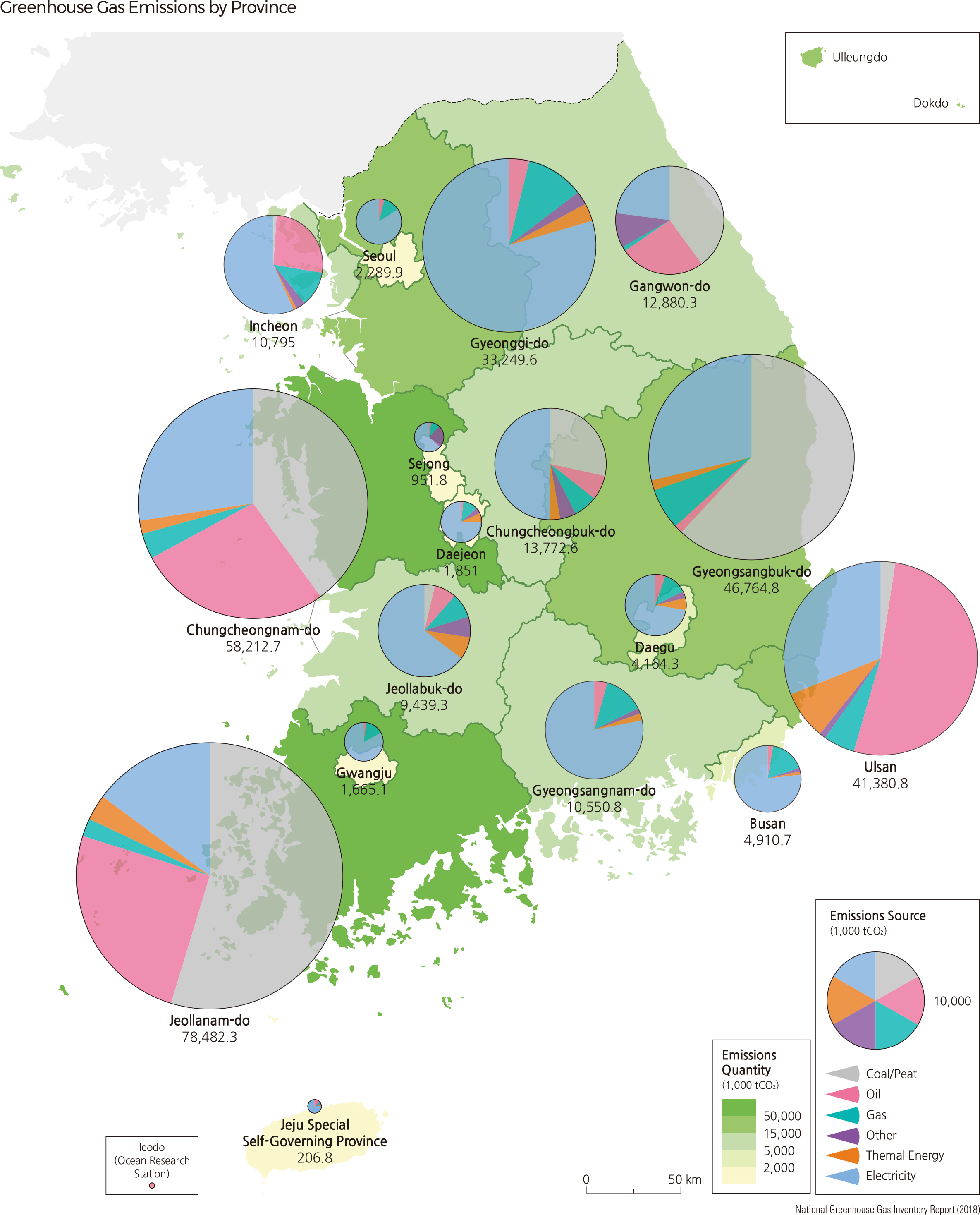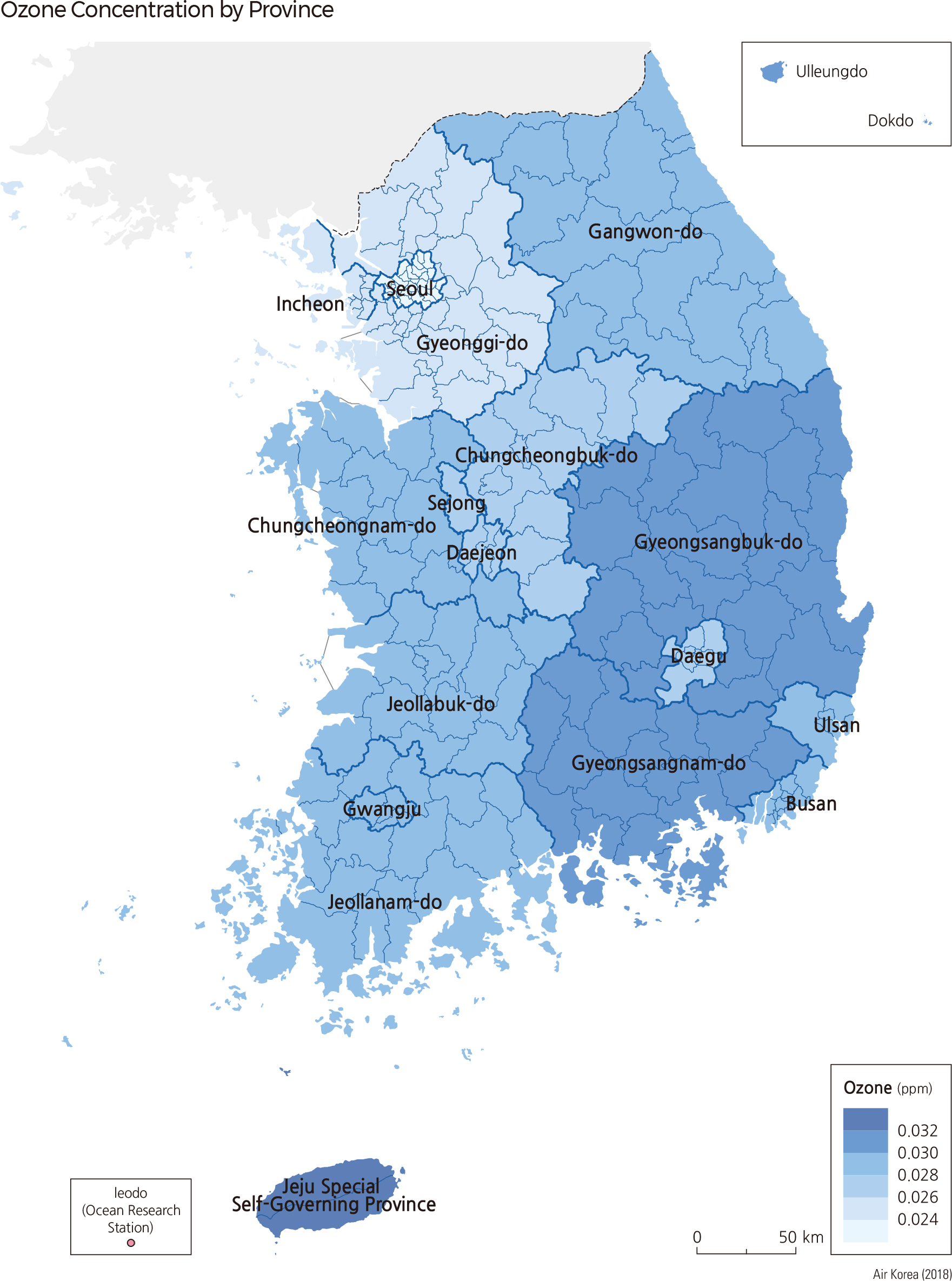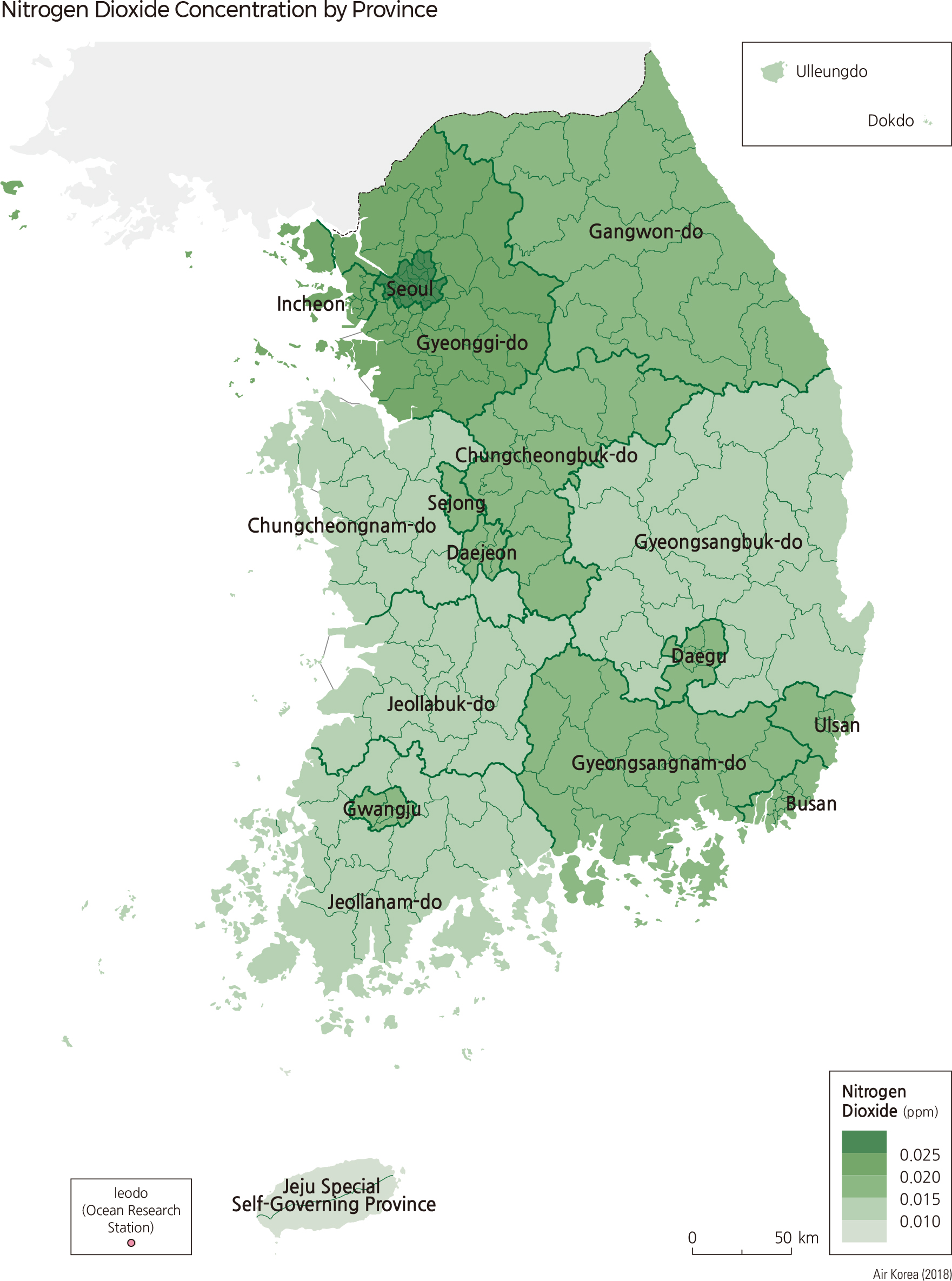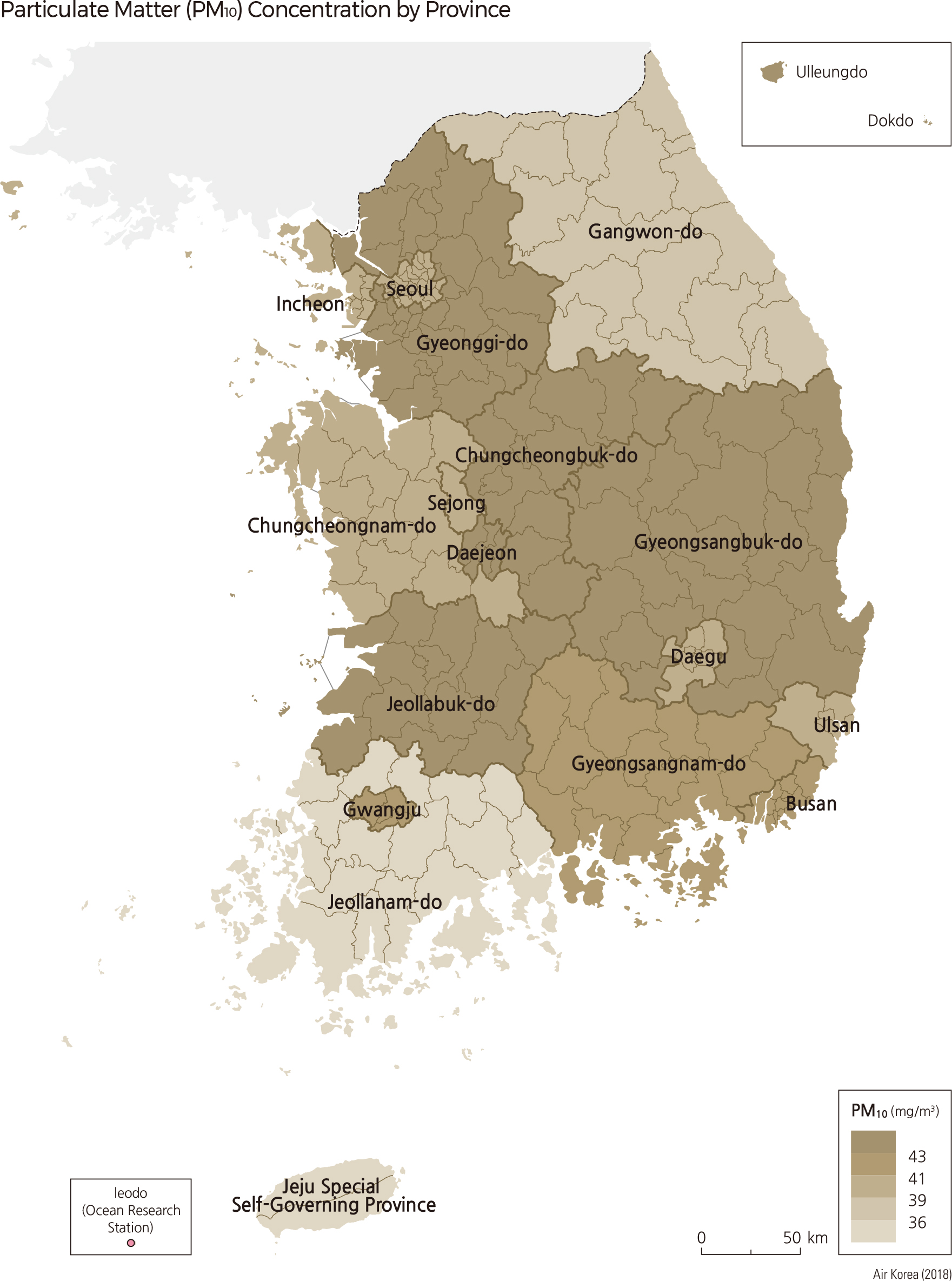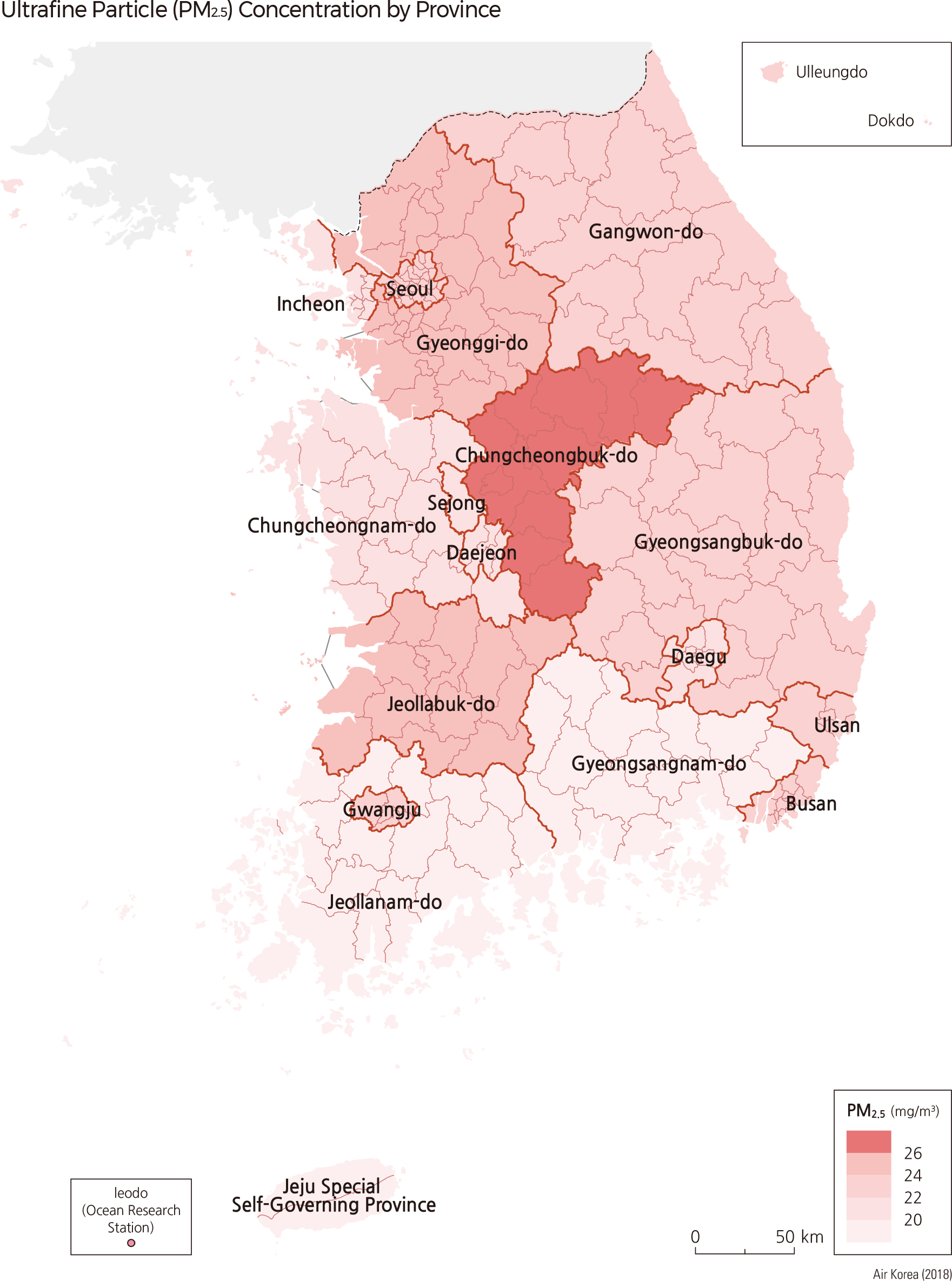English II 2020
South Korea has conducted various environmental projects monitoring factors responsible for environmental pollution. The data obtained through these projects provide the public real-time information and are used as the basis for national and local environmental policies.
As of 2018, the national air pollution monitoring network (584 stations) was implemented to investigate the patterns of ambient air pollution and to determine whether air quality standards were being achieved. The review and evaluation committee determines the degree of risk by referring to toxicity, ecosystem impact, and emissions. This network is composed of an urban air monitoring network (333 stations), a roadside air monitoring network (40 stations), a national background monitoring network (3 stations), a suburban air monitoring network (22 stations), an acid deposition monitoring network (41 stations), an atmospheric heavy metal monitoring network (56 stations), a hazardous air pollutants monitoring network (34 stations), a photochemical air pollutant monitoring network (18 stations), a global atmosphere monitoring network (1 station), a PM2.5 monitoring network (30 stations), and an intensive monitoring network (6 stations).
The data measured at the stations are stored at the National Air Pollution Information Management System (NAMIS). Data on air pollution is publicized in real-time through "Air Korea" (www. airkorea.or.kr), launched in December 2005.
Air pollution information is disclosed spatially in each measurement station and administrative district and temporally in daily, monthly, and yearly units. The information includes values of sulfurous acid gas (SO2), carbon monoxide (CO), nitrogen dioxide (NO2), ozone (O3), fine dust (PM10 PM2.5), lead (Pb), and benzene. These substances are mainly generated from industrial and fuel combustion processes. Sulfur dioxide, carbon monoxide, and fine dust (PM10, PM2.5) are gradually decreasing since the first measurement, and nitrogen dioxide is showing a slight decrease while repeating increases and decreases. On the other hand, ozone is a steadily increasing trend, excluding the year 2018, during which it decreased slightly.
To reduce the damage caused by a high concentration of air pollution, the Ministry of Environment launched a PM10 forecasting program for metropolitan areas (Seoul, Incheon, Gyeonggi-do) in August 2013 and expanded it throughout the country. In 2014, the forecasts were extended to include PM2.5 and ozone. As of 2020, a total of 19 regions are operating forecasting systems. The forecast level is classified into four stages based on the daily average, and it takes into account the atmospheric environmental standards and the impact on health. The Korean government has implemented an air pollution warning system for ozone levels. People can know the degree of pollution through the warning system when high concentrations of ozone or yellow dust occur. It notifies respiratory disease patients, the elderly, and children that are prone to harmful levels of ozone concentration and also strives to encourage the voluntary cooperation of citizens. First initiated in 1995 in Seoul, all local governments now utilize the warming system to verify ozone concentrations and issue warnings accordingly.
Currently, Korea's GHG emissions are estimated according to the 1996 guideline proposed by the Intergovernmental Panel on Climate Change (IPCC). The government established the Greenhouse Gas Inventory and Research Center of Korea (GIR), which conducts monitoring and research on GHG emissions and reduction strategies. In 2017, total GHG emissions in South Korea were recorded at 710 million tons of carbon dioxide (CO2) equivalent. This represents an increase of 140% compared with 292.3 million tons of CO2 equivalent in 1990 and 3% compared with the total emissions of 690 million tons of CO2 equivalent in 2012. In 2017, the energy sector accounted for the largest portion (87% of total GHG emissions), followed by the industrial processes sector (8%), the agricultural sector (3.0%), and the waste sector (2%).
In 2008, South Korea declared a "low-carbon, green growth" strategy as a new vision to guide the nation's long-term development (60 years), and in 2009 announced the GHG reduction target as the mid-term plan. In 2020, 80 local governments formed the "Carbon Neutral Local Government Action Solidarity" and decided to practice carbon neutrality.
|
